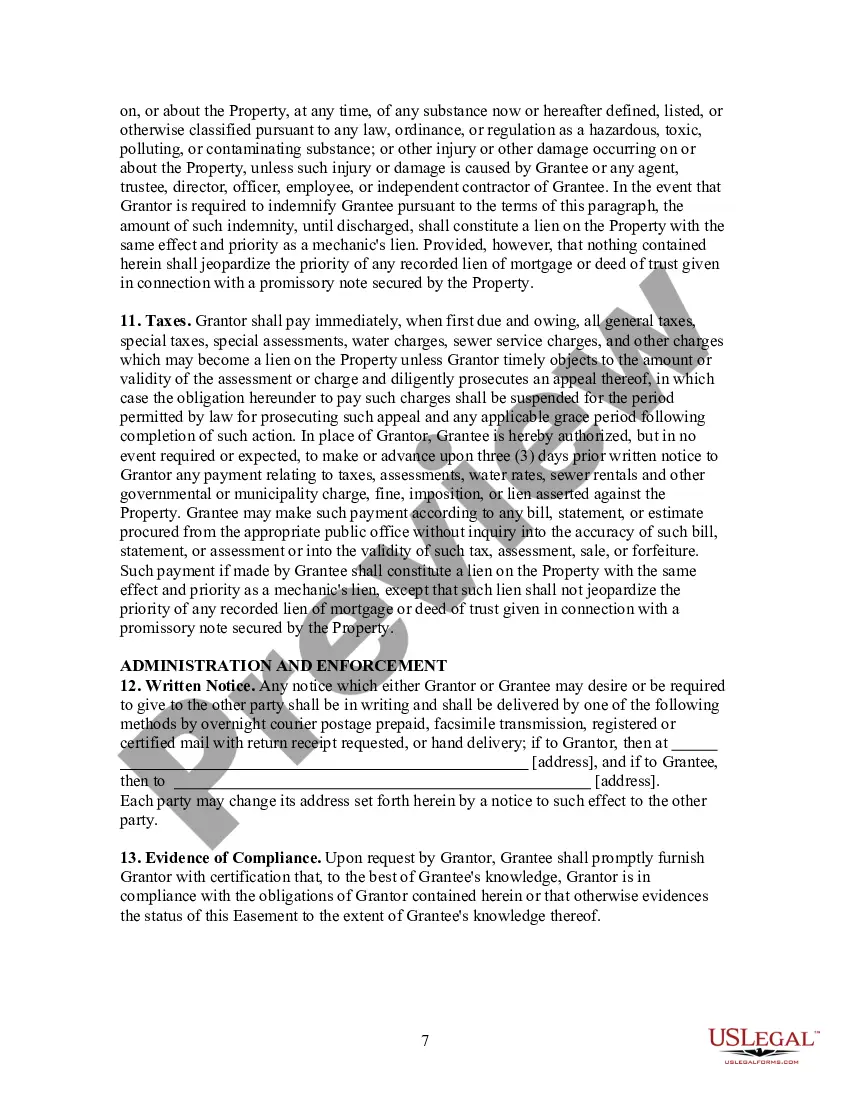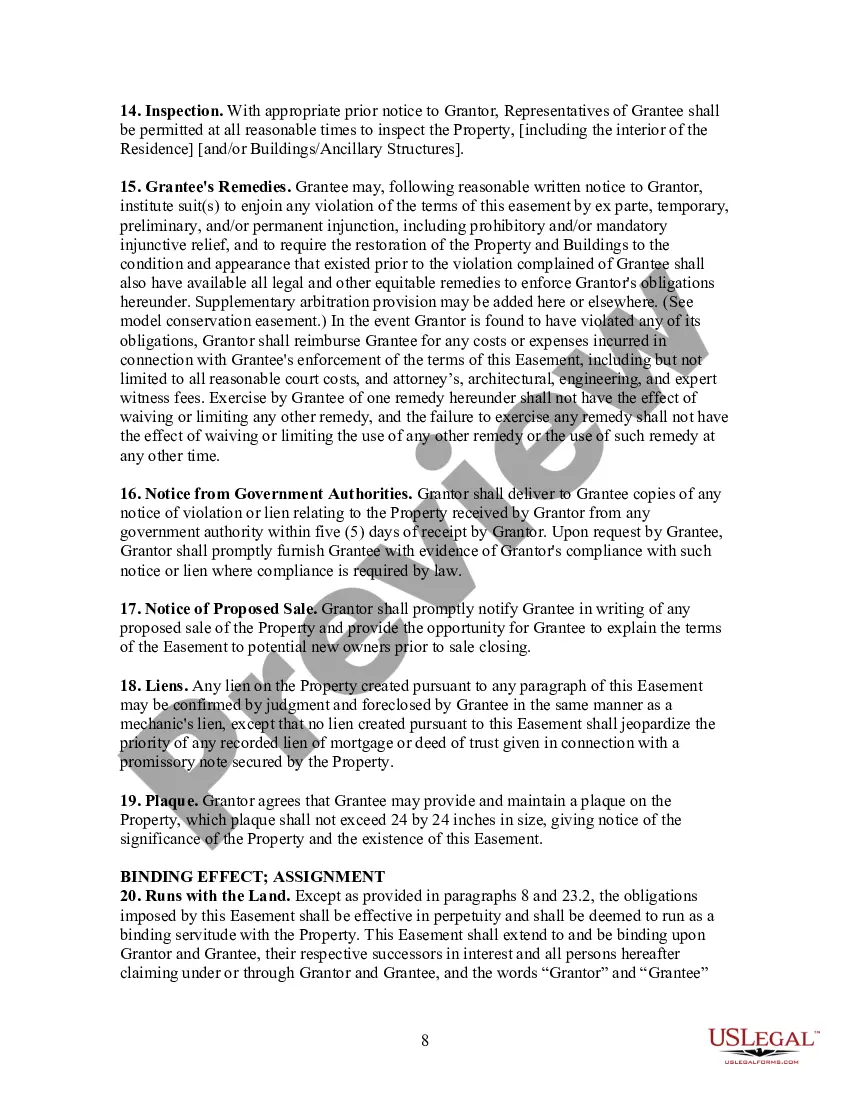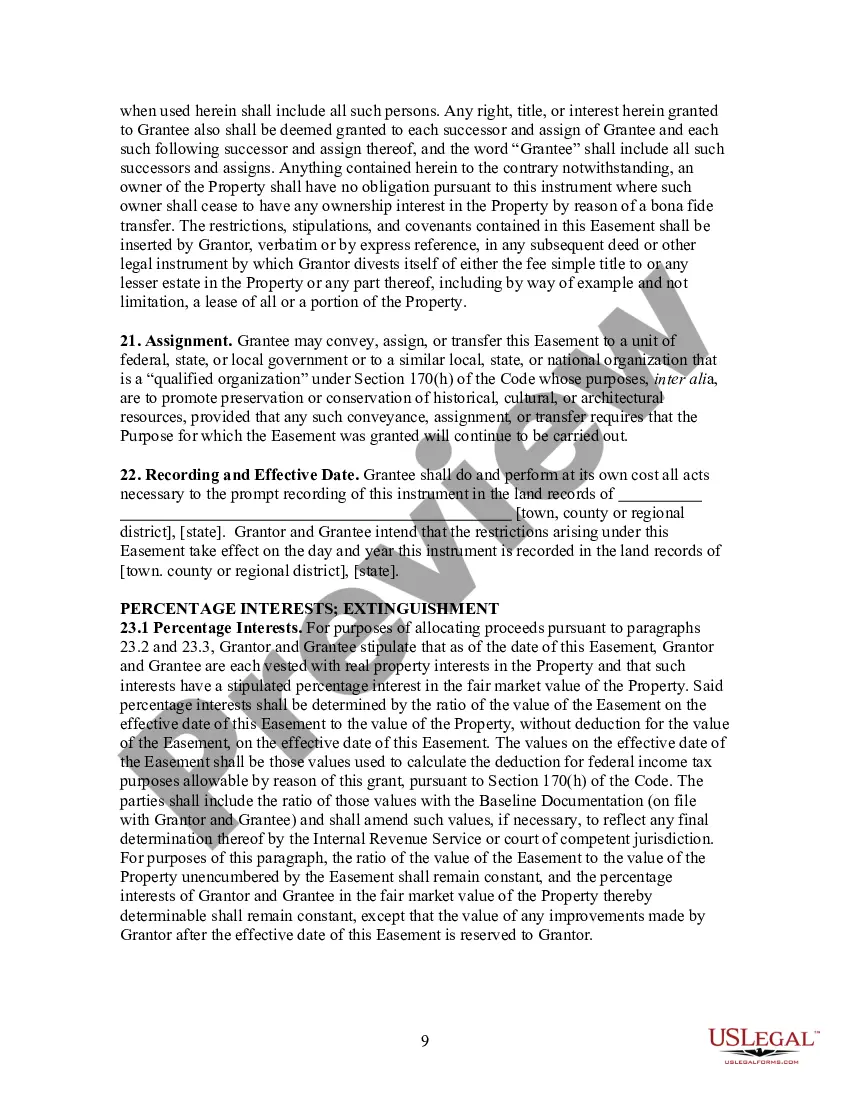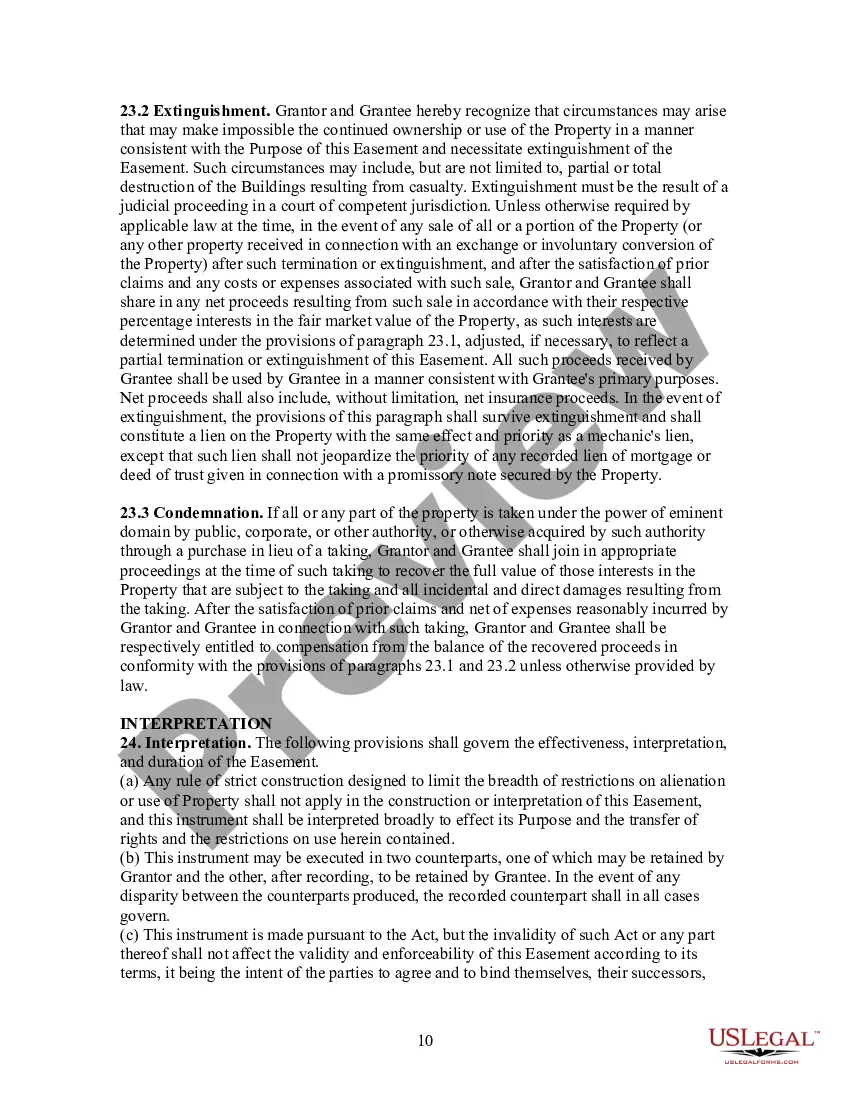A Pennsylvania Conservation Easement is a legally binding agreement that allows landowners to voluntarily protect and conserve their properties' natural resources and prevent future development. It is a land conservation strategy employed in the state of Pennsylvania to preserve the environmental, agricultural, historical, and scenic qualities of privately owned lands. These conservation easements are implemented in collaboration with land trusts, local governments, or state agencies and are established in perpetuity, meaning they are permanent and cannot be revoked or altered without mutual agreement between the landowner and the easement holder. There are different types of Pennsylvania Conservation Easements, each serving a specific purpose: 1. Agricultural Conservation Easement: This type focuses on safeguarding farmland and maintaining agricultural practices in perpetuity. It aims to protect the land's soil quality, water resources, and rural character, thereby ensuring a sustainable agricultural future for the state. 2. Natural Resource Conservation Easement: These easements aim to conserve and protect significant ecological features such as forests, wetlands, wildlife habitats, or water bodies. They ensure the continued existence of critical ecosystems, safeguarding biodiversity, and promoting sustainable land management practices. 3. Historic Conservation Easement: This type of easement focuses on preserving historically significant properties, buildings, or sites. It aims to protect and maintain the historical, architectural, and cultural values associated with these landmarks, allowing future generations to appreciate and learn from their historical heritage. 4. Scenic Conservation Easement: Scenic easements protect visually appealing landscapes or view sheds characterized by their natural or man-made beauty. They aim to preserve the scenic qualities of an area, limiting development that could obstruct or diminish these visual qualities, such as urban sprawl, billboards, or high-rise structures. The establishment of a conservation easement often involves a careful assessment of a property's conservation values, conducted by qualified professionals. These evaluations consider factors such as the land's ecological features, cultural significance, scenic beauty, or agricultural productivity. The easement terms are customized to suit the specific conservation needs of the property while respecting the rights of the landowner. In Pennsylvania, conservation easements often come with financial incentives, including tax benefits or grants, to encourage and support landowners in their conservation efforts. These incentives help offset the potential financial implications of limiting future land-use options while recognizing the importance of private land stewardship in preserving Pennsylvania's natural and cultural heritage. Overall, Pennsylvania Conservation Easements play a crucial role in maintaining the state's ecological balance, supporting sustainable agriculture, protecting historical sites, and preserving visually captivating landscapes for generations to come.
Pennsylvania Conservation Easement
Description
How to fill out Pennsylvania Conservation Easement?
If you want to comprehensive, down load, or produce legitimate document themes, use US Legal Forms, the most important assortment of legitimate varieties, that can be found on the Internet. Make use of the site`s simple and easy convenient lookup to obtain the files you want. Numerous themes for organization and person purposes are sorted by classes and claims, or key phrases. Use US Legal Forms to obtain the Pennsylvania Conservation Easement in a couple of click throughs.
In case you are currently a US Legal Forms customer, log in for your accounts and click the Download button to get the Pennsylvania Conservation Easement. Also you can access varieties you earlier downloaded from the My Forms tab of your own accounts.
Should you use US Legal Forms for the first time, follow the instructions under:
- Step 1. Be sure you have selected the form for the proper area/region.
- Step 2. Utilize the Review method to look through the form`s information. Don`t forget to see the outline.
- Step 3. In case you are not satisfied together with the type, make use of the Look for area at the top of the monitor to find other types of the legitimate type design.
- Step 4. When you have located the form you want, select the Purchase now button. Select the rates program you favor and put your references to register for the accounts.
- Step 5. Method the financial transaction. You can utilize your Мisa or Ьastercard or PayPal accounts to accomplish the financial transaction.
- Step 6. Pick the file format of the legitimate type and down load it in your product.
- Step 7. Comprehensive, revise and produce or sign the Pennsylvania Conservation Easement.
Each legitimate document design you acquire is your own permanently. You have acces to each type you downloaded inside your acccount. Click on the My Forms area and select a type to produce or down load yet again.
Be competitive and down load, and produce the Pennsylvania Conservation Easement with US Legal Forms. There are thousands of expert and state-certain varieties you can use for your personal organization or person requirements.











